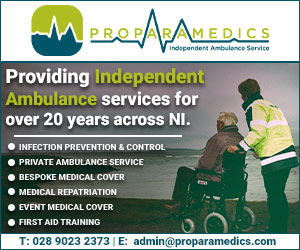20/05/2002
Sickness absence costs companies over £280m
New research suggests that medium-sized businesses in the construction sector could be losing £280 million a year due to sickness absence – equivalent to over 7% of their annual salary bill.
The figures, from income protection provider, UnumProvident, show that employers have become more concerned about employee sickness due in part to new legislation and guidelines holding employers more accountable for the welfare of their staff. However, there is growing evidence that in some instances the problem is increasing. Between 1975 and 1995, the proportion of 16-44 year olds with a longstanding illness rose from 16% to 23% - and from 34% to 41% among those aged 45-65, and there is no sign that the issue is abating.
Joanne Hindle, Corporate Services Director, UnumProvident, explained: "Sickness absence is a big problem for all employers, not just the big companies. Unfortunately, many employers underestimate its true cost. Indeed up to 18% do not include occupational sick pay when calculating the cost of sickness absence and 39% ignore additional overtime expenses.
"It is often said that staff is the most important asset employers have. Sadly this is not reflected in their sickness absence programmes. Employers, insurers and other interested partiers must work more closely to address this problem."
(CL)
The figures, from income protection provider, UnumProvident, show that employers have become more concerned about employee sickness due in part to new legislation and guidelines holding employers more accountable for the welfare of their staff. However, there is growing evidence that in some instances the problem is increasing. Between 1975 and 1995, the proportion of 16-44 year olds with a longstanding illness rose from 16% to 23% - and from 34% to 41% among those aged 45-65, and there is no sign that the issue is abating.
Joanne Hindle, Corporate Services Director, UnumProvident, explained: "Sickness absence is a big problem for all employers, not just the big companies. Unfortunately, many employers underestimate its true cost. Indeed up to 18% do not include occupational sick pay when calculating the cost of sickness absence and 39% ignore additional overtime expenses.
"It is often said that staff is the most important asset employers have. Sadly this is not reflected in their sickness absence programmes. Employers, insurers and other interested partiers must work more closely to address this problem."
(CL)
Related Northern Ireland Business News Stories
Click here for the latest headlines.
15 October 2001
UK employers hit by hidden costs of sickness absence
Absence from work is costing UK companies up to 16 per cent of their annual salary bill - yet half of these costs could be avoided. This is the key finding of a new report commissioned by Unum, the UK’s leading provider of income protection.
UK employers hit by hidden costs of sickness absence
Absence from work is costing UK companies up to 16 per cent of their annual salary bill - yet half of these costs could be avoided. This is the key finding of a new report commissioned by Unum, the UK’s leading provider of income protection.
03 December 2001
“Sign Off” culture rampant among UK doctors
The Confederation of British Industry (CBI) has accused the UK healthcare system of unnecessarily extending sickness absence by workers. The CBI claims that a "sign-off" culture among UK doctors has boosted the cost of sickness absence borne by employers to £23 billion a year, and around 200 million lost working days a year.
“Sign Off” culture rampant among UK doctors
The Confederation of British Industry (CBI) has accused the UK healthcare system of unnecessarily extending sickness absence by workers. The CBI claims that a "sign-off" culture among UK doctors has boosted the cost of sickness absence borne by employers to £23 billion a year, and around 200 million lost working days a year.
29 July 2002
Stress is a leading cause of long-term absence
Employees take an average of 10 days off sick each year, according to Employee Absence 2002, published today by the Chartered Institute of Personnel and Development (CIPD). While Northern Ireland remains at the bottom of the sick-day league, the latest survey shows a slight increase, from the reported 9.3 working days lost, in last year’s study.
Stress is a leading cause of long-term absence
Employees take an average of 10 days off sick each year, according to Employee Absence 2002, published today by the Chartered Institute of Personnel and Development (CIPD). While Northern Ireland remains at the bottom of the sick-day league, the latest survey shows a slight increase, from the reported 9.3 working days lost, in last year’s study.
15 May 2006
Staff absence falls but cost increases
The total number of days lost through sickness absence dropped by 4 million to 164 million days last year, the Confederation of British Industry (CBI) has reported.
Staff absence falls but cost increases
The total number of days lost through sickness absence dropped by 4 million to 164 million days last year, the Confederation of British Industry (CBI) has reported.
03 October 2016
HMRC Announces Webinars On Statutory Payments
HM Revenue & Customs has announced a series of free webinars throughout October aimed at helping employers understand statutory payments for sick pay, maternity pay and parental leave. The webinars include: • Statutory Sick Pay Feel better about SSP - find out when to pay, how much and for how long during this interactive webinar.
HMRC Announces Webinars On Statutory Payments
HM Revenue & Customs has announced a series of free webinars throughout October aimed at helping employers understand statutory payments for sick pay, maternity pay and parental leave. The webinars include: • Statutory Sick Pay Feel better about SSP - find out when to pay, how much and for how long during this interactive webinar.
-
Northern Ireland WeatherToday:A sunny but frosty start for many. However cloud increases by midday with a few showers reaching the north coast, these mostly light but spreading inland this afternoon. Chilly. Maximum temperature 8 °C.Tonight:A rather cloudy evening with scattered showers. Becoming drier through the night with some good clear spells developing and a patchy frost away from coasts. Minimum temperature 0 °C.








